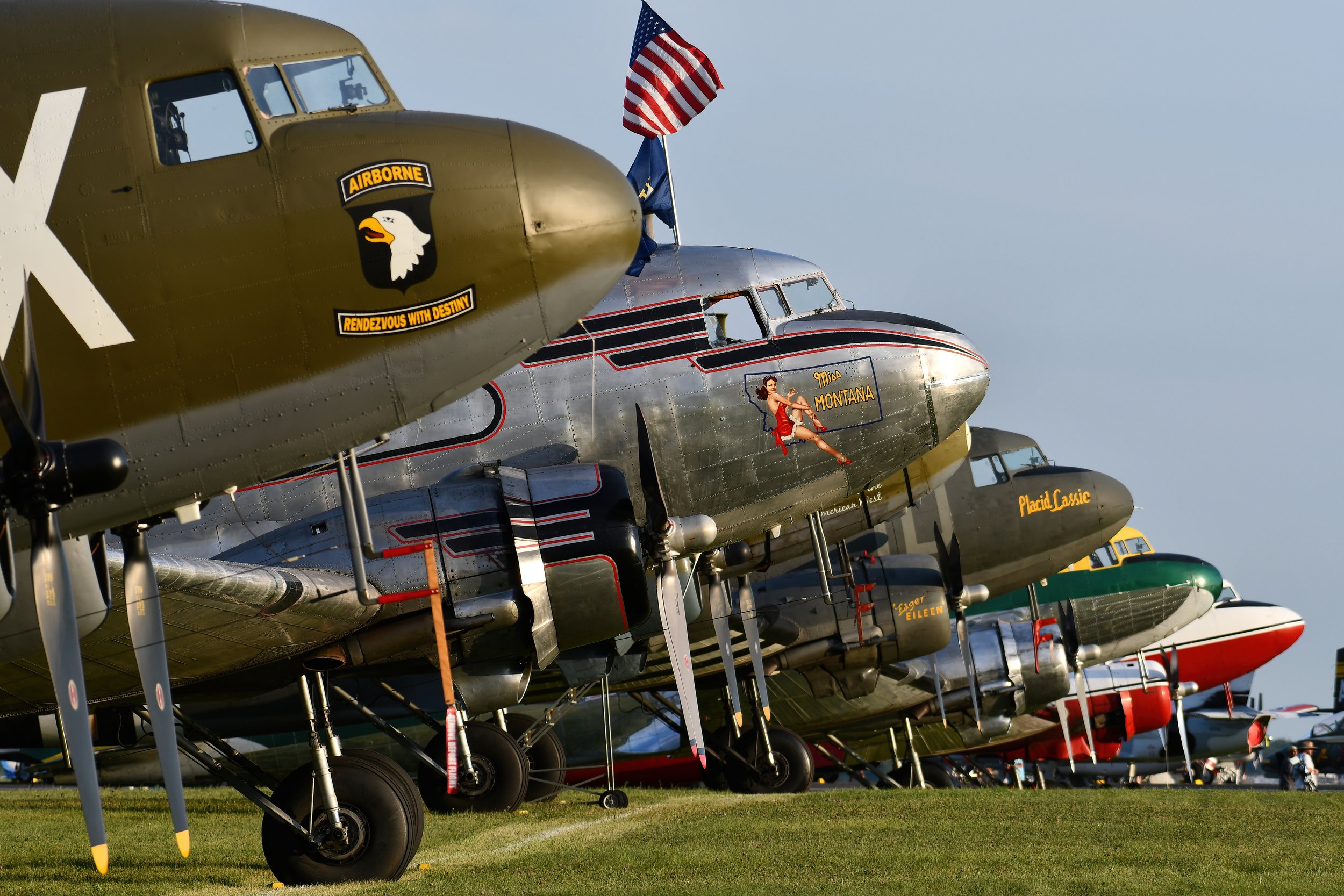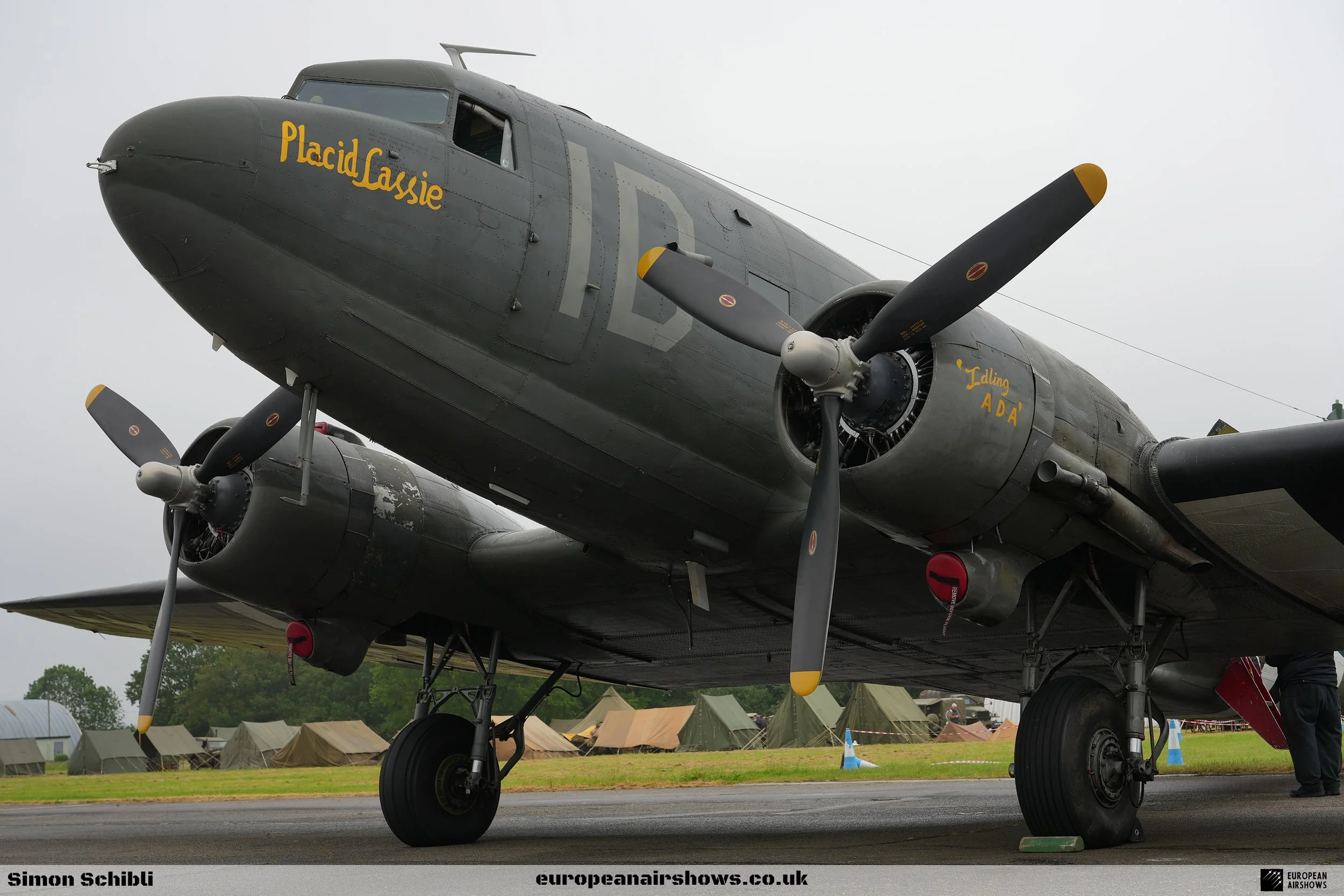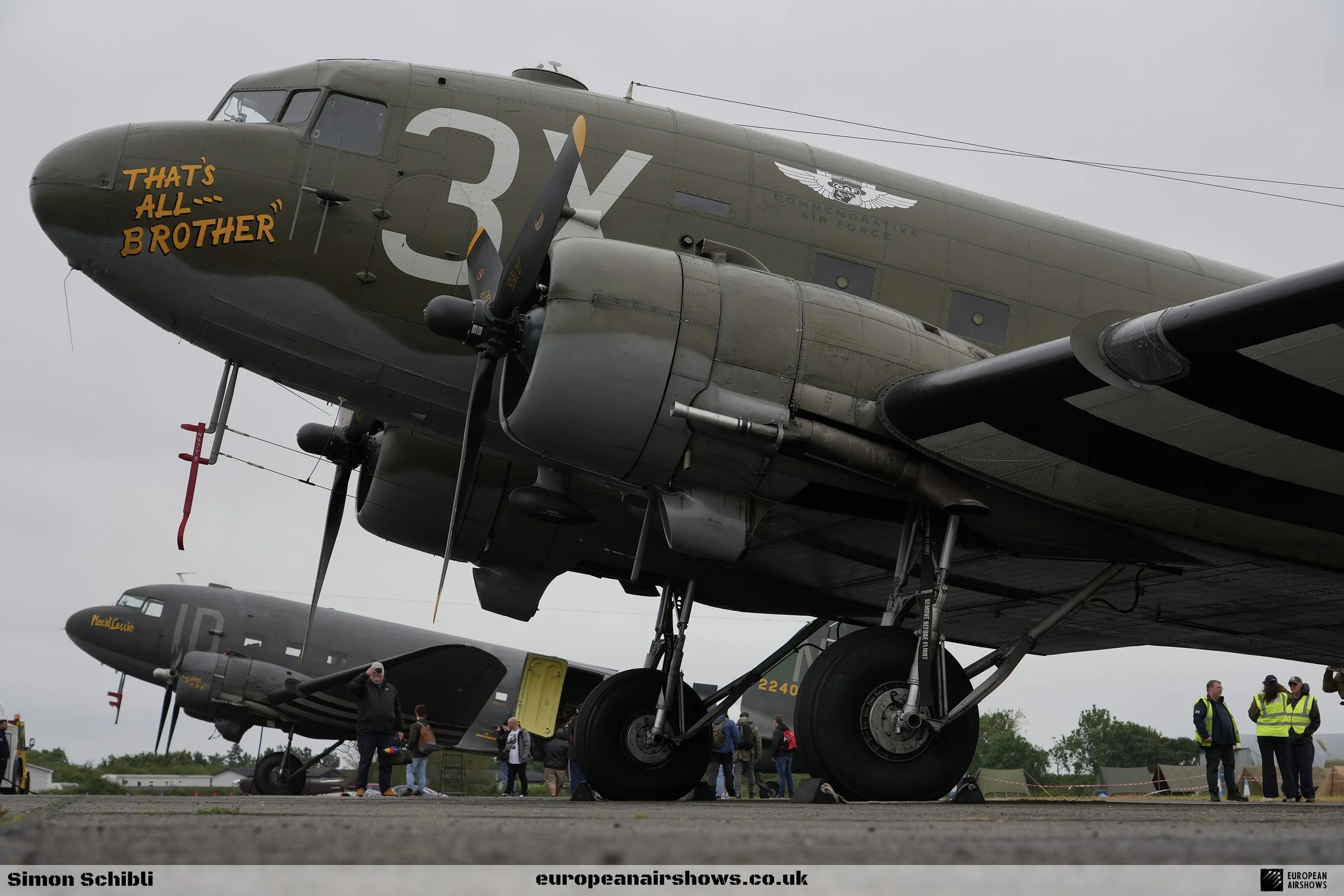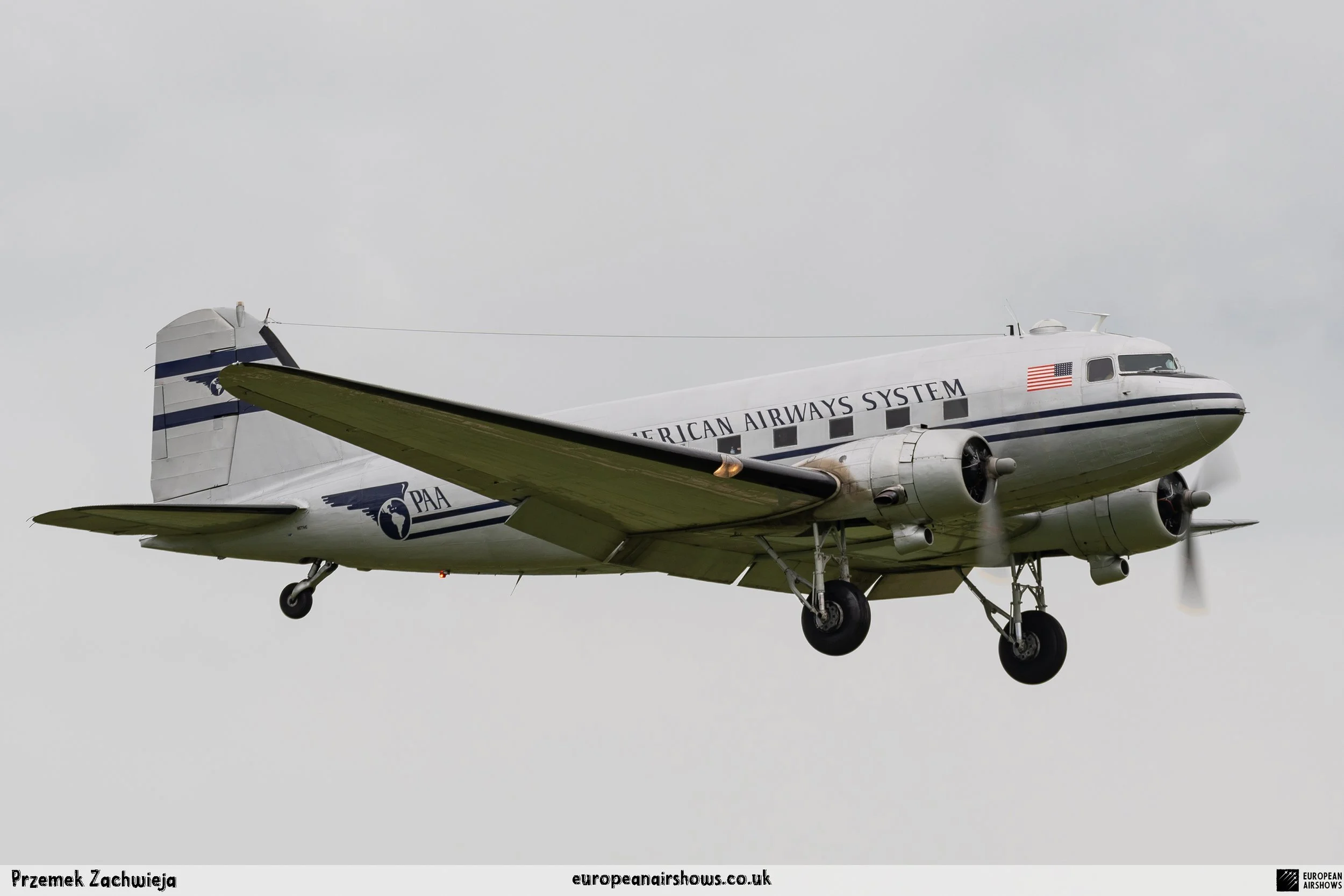
December 23 / Douglas C-47 Skytrain first flight
First Flight 23 December 1941
Douglas C-47 Skytrain
The Douglas C-47 Skytrain, known as the Dakota in RAF service, is a legendary military transport aircraft that evolved from the civilian Douglas DC-3 airliner. Its storied history is deeply intertwined with the events of World War II, during which it became a vital asset for the Allies. The C-47 was a versatile workhorse, utilized for a wide array of missions including troop transport, cargo delivery, paratrooper drops, glider towing, and military cargo parachute drops. Its adaptability and reliability ensured that it remained in front-line service with numerous military operators for many years after the war. The C-47 was produced in far greater numbers than its counterpart, the Curtiss C-46 Commando, which was another military transport aircraft serving a similar role for the U.S. military.
The C-47 has seen service with the armed forces of approximately 100 countries, and over 60 variants of the aircraft have been produced. Remarkably, like its civilian counterpart, the DC-3, the C-47 continues to serve in various capacities even today, more than 80 years after its introduction.
The design and development of the C-47 involved several modifications from the original DC-3. These included the addition of a cargo door, hoist attachment, and a strengthened floor, along with a shortened tail cone to accommodate glider-towing shackles and an astrodome in the cabin roof. During World War II, the C-47 and modified DC-3s were widely used by the armed forces of many nations for transporting troops, cargo, and the wounded. The U.S. Navy designated their version as the R4D. More than 10,000 C-47s were produced across factories in Long Beach and Santa Monica, California, and Oklahoma City, Oklahoma. Notably, between March 1943 and August 1945, the Oklahoma City plant alone produced 5,354 C-47s.
A specialized version, the C-53 Skytrooper, began production in October 1941 at Douglas Aircraft’s Santa Monica plant. Unlike the C-47, the C-53 lacked a cargo door, hoist attachment, and reinforced floor, which limited its versatility. As a result, only 380 C-53s were produced, with the C-47 proving to be the more versatile option.
In the late 1940s, Douglas introduced a conversion of the DC-3 known as the Super DC-3, or DC-3S, in response to proposed changes in Civil Air Regulations. This new model featured improvements in takeoff and single-engine performance, and it was 39 inches longer than the original. The Super DC-3 could carry 30 passengers and boasted increased speed to compete with newer airliners. The design changes included larger tail surfaces, new swept-back wings, more powerful engines, and other aerodynamic enhancements. The first Super DC-3 took flight on June 23, 1949. Although it met new airworthiness requirements and offered significantly improved performance, the Super DC-3 failed to attract much commercial interest due to its cost, with only three sold to Capital Airlines. However, the U.S. Navy and Marine Corps modified 100 of their R4D aircraft to Super DC-3 standards, designating them as R4D-8, later redesignated C-117D.
The C-47 family encompasses a wide variety of variants, each tailored for specific roles and missions. The initial military version of the DC-3, the C-47, had a crew of four and could carry 27 troops. It was also used as an “Aerial Ambulance” for casualty evacuation, capable of transporting 18 stretcher cases and a medical crew of three. The C-47A variant featured a 24-volt electrical system, with 5,254 units built, including those designated as R4D-5 for the U.S. Navy. The RC-47A was equipped for photographic reconnaissance and electronic intelligence missions, while the SC-47A was designed for search and rescue operations, later redesignated as HC-47A. The VC-47A served as a VIP transport.
The C-47B variant, powered by R-1830-90 engines with two-speed superchargers for better altitude performance, was developed for the challenging China-Burma-India routes, with 3,364 units built. The VC-47B was a VIP transport version of the C-47B. The XC-47C was tested with floats for potential seaplane use. The C-47D was a post-war modification of the C-47B, with the high blower of the engine supercharger disabled or removed. The AC-47D Spooky was a gunship variant armed with three side-firing Minigun machine guns. The EC-47D was equipped for electronics calibration, with 26 conversions completed by Hayes in 1953. The NC-47D was modified for test roles, while the RC-47D was used for reconnaissance and electronic intelligence. The SC-47D was a search and rescue variant, later redesignated as HC-47D. The VC-47D served as a VIP transport.
The C-47E was a modified cargo variant with space for 27-28 passengers or 18-24 litters. The C-47F, also known as the YC-129, was a Super DC-3 prototype evaluated by the USAF before being passed to the USN as the XR4D-8. The C-47L/M variants were equipped for missions supporting the American Legation United States Naval Attache (ALUSNA) and Military Assistance Advisory Group (MAAG). The EC-47N/P/Q variants were modified for electronic intelligence and airborne radio direction finding missions, with differences in radio bands covered and equipment upgrades.
The C-53 Skytrooper was a troop transport version of the C-47, lacking the reinforced cargo floor and large cargo door. It was dedicated to troop transport and could carry 28 passengers in fixed metal seats. The XC-53A Skytrooper was a testbed with full-span slotted flaps and hot-air leading-edge de-icing. The C-53B was a winterized Arctic version with extra fuel tanks and a navigator’s astrodome. The C-53C had a larger port-side access door, while the C-53D featured a 24V DC electrical system and side-mounted seats.
The C-117A Skytrooper was a C-47B with a 24-seat airline-type interior for staff transport. The VC-117A was used for VIP transport, while the SC-117A was converted for air-sea rescue. The C-117B/VC-117B had high-altitude superchargers replaced by single-speed superchargers. The C-117D was the redesignated USN/USMC R4D-8. The LC-117D was the redesignated R4D-8L for Antarctic use, and the TC-117D was the redesignated R4D-8T for crew training. The VC-117D was the redesignated R4D-8Z for staff transport. The YC-129 was the Super DC-3 prototype, later redesignated as C-47F and passed to the USN as XR4D-8. The CC-129 was the Canadian Forces designation for the C-47 post-1970. The XCG-17 was a C-47 tested as a troop glider.
The R4D-1 Skytrain was the USN/USMC version of the C-47, with various sub-variants designated R4D-3, R4D-5, R4D-6, and others, each tailored for specific roles such as ECM training, personnel transport, ASW training, and VIP transport. The R4D-8 series included remanufactured aircraft with stretched fuselages and modified wings, redesignated as C-117D, LC-117D, TC-117D, and VC-117D in 1962.
The C-47TP “Turbo Dak” was a refit with turboprop engines and a fuselage stretch for the South African Air Force. The Basler BT-67 was a C-47 conversion with a stretched fuselage, strengthened structure, modern avionics, and turboprop engines.
The RAF designated the C-47 and its variants as Dakota I, II, III, and IV, with additional proposed conversions by Airspeed that were never built. The BEA Pionair/Dart-Dakota was a conversion to Rolls-Royce Dart power, used by BEA to test turboprop engines before the Vickers Viscount entered service.
This rich history and the numerous variants of the C-47 Skytrain underscore its importance and enduring legacy as one of the most versatile and reliable aircraft in military aviation history.
C-47 Skytrain Facts
Origins: The C-47 Skytrain was developed from the civilian Douglas DC-3 airliner, which first took to the skies in 1935.
World War II Service: The C-47 played a crucial role during World War II, serving as a military transport aircraft for the Allies. It was used for troop transport, cargo delivery, paratrooper drops, and medical evacuations.
Production Numbers: Over 10,000 C-47s were produced during its manufacturing run, making it one of the most widely used military transport aircraft in history.
Global Reach: The C-47 has been operated by approximately 100 countries, showcasing its versatility and reliability across various military forces worldwide.
Variants: There are over 60 variants of the C-47, including specialized versions for reconnaissance, electronic intelligence, VIP transport, and gunship roles.
Longevity: The C-47 remains in service today, over 80 years after its introduction, with some aircraft still flying in various capacities, including cargo transport and aerial firefighting.
Design Modifications: The C-47 featured several modifications from the DC-3, including a cargo door, reinforced floor, and an astrodome for navigation.
Notable Variants: Some notable variants include the AC-47D Spooky, a gunship equipped with side-firing Miniguns, and the VC-47, which served as a VIP transport aircraft.
Military Designations: The U.S. Navy designated the C-47 as the R4D, with various sub-variants for specific roles, such as the R4D-5 and R4D-8.
Legacy: The C-47 has influenced numerous aircraft designs and remains a symbol of military aviation, known for its ruggedness, versatility, and the vital role it played in military operations throughout the 20th century.































